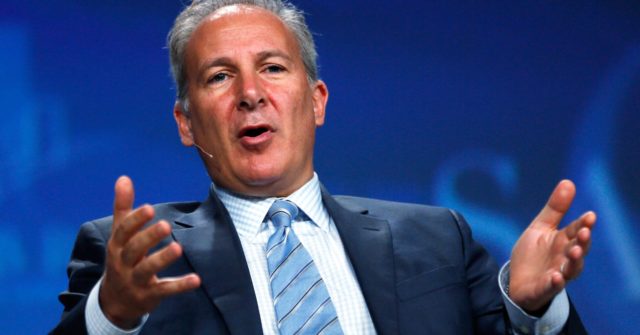A year of impressive gains in 2021 for Wall Street, which on Friday completed its best three years since the corresponding period ending in 1999. A big winner S&P 500 who recorded rally 26.9% per year, setting a record in 70 sessions. THE Nasdaq climbed against 21,4% on an annual basis, while the Dow Jones strengthened almost by 18,7%.
The energy sector led the profits of the S&P 500 with a rally of 47% per year, followed by the real estate sector with an increase of more than 40%. Technology and financial products increased by more than 30%.
At Dow, shares of Home Depot and Microsoft jumped more than 50% each. Alphabet, Apple, Meta Platforms and Tesla were the drivers of Nasdaq profits this year.
“2021 was another great year for US equities,” said Chris Haverland of the Wells Fargo Investment Institute. “Markets have been supported by extremely accommodative fiscal and monetary policies.”
Strong corporate earnings also boosted US stocks. The estimated annual profit growth rate for 2021 is at 45.1%, according to FactSet. This marks the highest annual rate of profit growth for the index since FactSet began monitoring the measurement in 2008.
“The recovery of the economy and profits that started in 2020 was carried over to 2021, raising stock markets to record levels. While yields in 2020 were driven by the expansion of the price multiplier to profits, yields in 2021 were driven by rising profits “, noted Haverland.
The gains continued in 2021 despite the pandemic waves of the Delta mutation and, more recently, the Omicron. More than 53 million coronavirus cases and more than 820,000 deaths have been reported in the United States, according to the CDC. However, vaccinations and new public health protocols have boosted the investment climate.
The financial results for the fourth quarter of 2021, the pace of tightening monetary policy to be followed by the US Federal Reserve and the midterm elections in the US Congress will be the key factors for the course of the US market in its first months. 2022.
Some investors and strategic analysts see more difficulties in the second half of 2022, always in connection with the Fed tapering in order to curb persistent inflation.
Small losses in the last meeting of 2021
The key indicators of the Wall closed with small losses in the last session of 2021, after the mood for investment risk “deflated” on New Year’s Eve in the middle of the low festive trading volume, which strengthened the volatility with the Dow and S&P 500 to exchange signals.
Trading on the Wall has sluggishly closed at the close of an impressive year for markets and with economies on the verge of recovery from the effects of the pandemic crisis. Investors, however, continue to weigh the potential impact of the new pandemic wave on economies, with most estimating that the highly contagious Omicron mutant strain of the coronavirus will not derail the recovery.
“The market has been sluggish. It usually tends to fall slightly on the last day of the year,” said Thomas Hayes, chief executive of Great Hill Capital Llc.
Earlier, encouraging news was coming from South Africa, where the new Covid-19 mutation was first spotted last month after the government announced it had surpassed the peak of the Omicron wave, with a “marginal” increase in deaths. “According to our experts, Omicron reached its peak without [αυτό] “translate into a significant or worrying change in the number of hospitalizations,” said the minister despite President Modil Gungumbele.
In the meantime, his performance 10-year government bond The United States fell 1.8 basis points to 1.496% on Friday, but rose the most on an annual basis since 2013. dollar gained 0.4% today, according to the ICE US Dollar.
In this climate, the industrial Dow lost 0.16% to 36,338.30 points, the widest S&P 500 recorded losses of 0.26% at 4,766.18 points and the technological Nasdaq fell 0.61% to 15,644.97.
In week the Dow gained 1.1%, the S&P 500 added 0.9%, while the Nasdaq lost 0.05%. In monthly basis the industrial index strengthened by 5.4%, the S&P 500 by 4.4%, and the Nasdaq by 0.7%. In the Semester The Dow added 7.4%, the broader Wall Index 10.7% and the technology 8.3%.
From 30 shares that make up the Dow, 8 closed with a positive sign and 22 with a negative. Home Depot (+ 1.24%) and Walmart (+1.06) led the gains, while Microsoft (-0.88%) and Golman Sachs (-0.77%) recorded the biggest losses.
Xeris Biopharma Holdings Inc. jumped 20.58% after receiving approval for the drug Recorlev, which it produces to treat adult patients with Cushing’s syndrome, a rare hormonal disorder.
Tesla’s share slipped 1.27% as the auto industry recalled more than 475,000 of the Model 3 and Model S electric vehicles to deal with rear-view camera and boot problems that increase the risk of a collision.
In corporate news, Advanced Micro Devices announced yesterday that the acquisition of the semiconductor company Xilinx will not close until the end of 2021, but expects the deal to be sealed in early 2022. Its share today lost 0.86%.
Zepp Health cut its fourth-quarter revenue forecast, citing “greater-than-expected effects of the pandemic” and the lack of semiconductors worldwide. Its share remained almost unchanged on Friday.
In addition, the UK Food and Drug Administration said it had approved Pfizer Paxlovid antiviral pill for people with mild covid-19 disease who have at least one risk factor for developing a serious illness. The share of the pharmaceutical company increased by 1.11%.
.
I am Sophia william, author of World Stock Market. I have a degree in journalism from the University of Missouri and I have worked as a reporter for several news websites. I have a passion for writing and informing people about the latest news and events happening in the world. I strive to be accurate and unbiased in my reporting, and I hope to provide readers with valuable information that they can use to make informed decisions.







